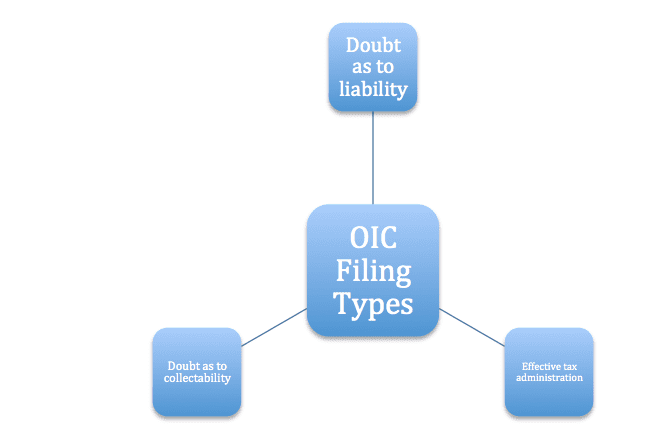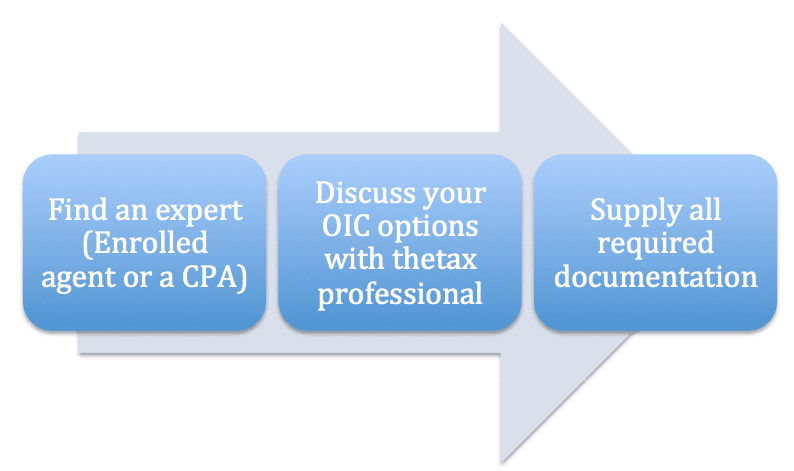IRS Offer in Compromise: Using an Effective Tax Administration Filing Approach 2021 (Blog post with graphics)
An IRS Offer in Compromise (OIC) is heavily marketed strategy to reduce a tax liability. While many companies promote their expertise, you need an enrolled agent or CPA to guide you through this complex process.
This post explains an overview of the OIC process, why offer are rejected, the three approaches used to justify the offer, and how to use the effective tax administration (ETA) approach.
If you’re a tax professional who provides tax resolution services, Lambers provides a 10-course Tax Resolution Series to help professionals sharpen their skills, and find new business. Find out more here.
Just how large is the tax delinquency problem?
Contents
An overview of the tax delinquency issues
At the end of fiscal year 2018, there were over 14 million individual tax returns (Form 1040s) with a balance due, totaling $128 billion in tax liabilities (per IRS Delinquent Collection activities reports). During the same period, 2.3 million tax delinquency investigations were conducted.
59,000 Offers in Compromise (OICs) were submitted, with 24,000 accepted (about 40%), collecting over $261 million.
As you can see, less than 50% of OIC agreements are accepted, and there are several reasons why.
If you’re an enrolled agent, Lambers offers quality continuing education courses, with great customer service and affordable prices. Find out more here.
Reasons why offers are rejected
The reasons for rejection are driven by the taxpayer’s lack of proper preparation and follow up:
- Incomplete applications: If data is incomplete, the IRS may return the data, or set it aside and work on complete applications.
- Taxpayer not in compliance: Lack of compliance due to unfiled tax returns. Note: A current year tax return with a valid extension is considered to be in compliance.
Reasons for the OIC program
The OIC program allows the IRS to collect more money in less time, and uses less IRS staff time:
- IRS can collect some funds from taxpayers who would otherwise never pay (Some taxpayers simply go off of the grid)
- Receive payment from funds that otherwise could not be tapped (family loans, for example)
- Collect more money than trying to seize and sell taxpayer property, which is time consuming for IRS staff
- Compliance: Once the OIC is in place, the taxpayer must stay in compliance
The IRS has a limited staff, and is looking to speed up the collection process to collect as much as possible.
Understanding two important tax forms
Many former IRS Revenue Officers work as Enrolled Agents and assist taxpayers with the OIC process. To start the process, it’s important to distinguish between two forms:
Form 656: This form lists amount of the offer and the terms
Form 433 (OIC) is a form called Collection Information Statement for Wage Earners and Self-Employed Individuals
The time intensive part of completing an OIC is providing the financial data in Form 433. The three types of OIC filings are:
- Doubt as to liability (find out more in this blog post)
- Effective tax administration
- Doubt as to collectability
This post explains effective tax administration, and the two other OIC filings are explained in other blog posts.
Effective tax administration
Effective tax administration (ETA) filings are rarely approved. With this filing, there is not doubt that the tax liability exists, and you must also file Form 433. Effective tax administration includes the following components:
- Demonstrates compelling public policy: Because of the nature of the individual’s situation
- Deals with overall fairness and equity
- Taxpayer must demonstrate facts that justify exceptional circumstance
- The taxpayer must have equity and/or reasonable collection potential to pay the full liability
To start the process, complete Form 656, Section 3- Reason for Offer, check the ETA box, and explain the circumstances. You’ll see other instructions below
An ETA may be appropriate for a taxpayer who is old, ill, or frail. Here’s an example:
A physically disabled person owns a home, and needs the customized home to accommodate for the disability. Selling the home would make it difficult to care for the disabled taxpayer. Finally, the taxpayer has no ability to earn income and make payments on another home or apartment.
IRS Manual vs. the IRS code
The IRS manual (guidance for IRS employees) requires you to be in compliance to quality for an ETA offer. Compliance requires the taxpayer to file all required tax returns, for example. However the IRS Code does not have this provision.
As a result, the Tax Court has overturned some ETA filings that have been rejected. In one case, the taxpayer had several years of unfiled tax returns. In another, the taxpayer had not paid the current year tax liability. Both taxpayers were otherwise in compliance for an ETA.
Documents that must be included
- Form 2848 Power of Attorney: Giving enrolled agent POA. If two spouses, each needs separate POA signed.
- Form 656: The ETA box is checked in Section 3, and an explanation is included that explains why an ETA is justified
- Form 433: Collection Information Statement for Wage Earners and Self-Employed Individuals
- Application fee
Here are some guidelines that apply to all OIC filings.
Key provisions for all offers
- When an offer is made: Remains open until IRS accepts, rejects, counters, or returns in writing. The taxpayer can also revoke an offer. It’s critically important to track all of the dates related to a filing.
- Filing accepted: If IRS accepts an OIC, you cannot contest it
- Liens: IRS will most likely file a lien (or leave a lien in place) until full payment of the offer is satisfied
- Client default: In the event of a default, the IRS will attempt to collect the full balance, plus penalties and interest
Note, also, that the IRS may speak with third parties, including the taxpayer’s bank, employer, or insurance companies.
The main reason for an OIC rejection: Documentation is missing, or not supplied in a timely manner. So, where do you go from here?
Consult with a tax professional (CPA or enrolled agent) on all tax-related issues. Best of luck.
Ken Boyd
Author: Cost Accounting for Dummies, Accounting All-In-One for Dummies, The CPA Exam for Dummies and 1,001 Accounting Questions for Dummies
(email) ken@stltest.net
(website and blog) https://www.accountingaccidentally.com/




